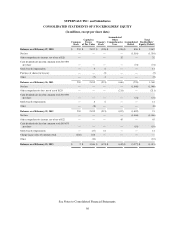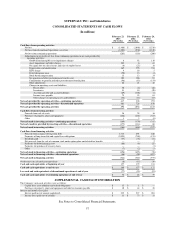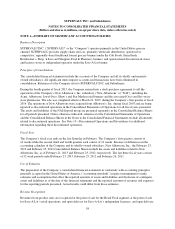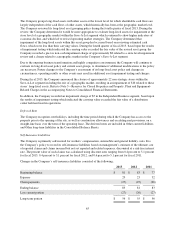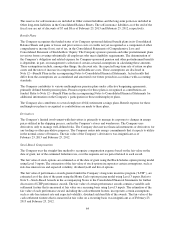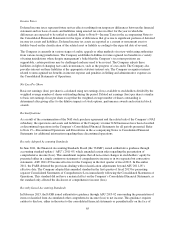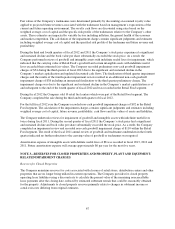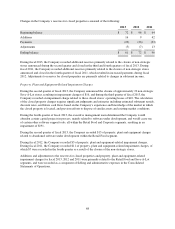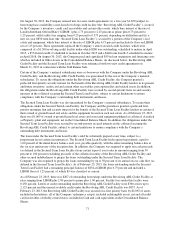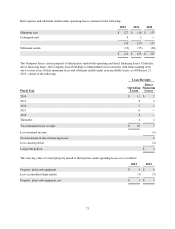Albertsons 2013 Annual Report Download - page 67
Download and view the complete annual report
Please find page 67 of the 2013 Albertsons annual report below. You can navigate through the pages in the report by either clicking on the pages listed below, or by using the keyword search tool below to find specific information within the annual report.Income Taxes
Deferred income taxes represent future net tax effects resulting from temporary differences between the financial
statement and tax basis of assets and liabilities using enacted tax rates in effect for the year in which the
differences are expected to be settled or realized. Refer to Note 8—Income Taxes in the accompanying Notes to
the Consolidated Financial Statements for the types of differences that give rise to significant portions of deferred
income tax assets and liabilities. Deferred income tax assets are reported as a current or noncurrent asset or
liability based on the classification of the related asset or liability according to the expected date of reversal.
The Company is currently in various stages of audits, appeals or other methods of review with taxing authorities
from various taxing jurisdictions. The Company establishes liabilities for unrecognized tax benefits in a variety
of taxing jurisdictions when, despite management’s belief that the Company’s tax return positions are
supportable, certain positions may be challenged and may need to be revised. The Company adjusts these
liabilities in light of changing facts and circumstances, such as the progress of a tax audit. The Company also
provides interest on these liabilities at the appropriate statutory interest rate. The Company recognizes interest
related to unrecognized tax benefits in interest expense and penalties in Selling and administrative expenses in
the Consolidated Statements of Operations.
Net Loss Per Share
Basic net earnings (loss) per share is calculated using net earnings (loss) available to stockholders divided by the
weighted average number of shares outstanding during the period. Diluted net earnings (loss) per share is similar
to basic net earnings (loss) per share except that the weighted average number of shares outstanding is
determined after giving effect to the dilutive impacts of stock options, performance awards and restricted stock
awards.
Reclassifications
As a result of the consummation of the NAI stock purchase agreement and the related sale of the Company’s NAI
subsidiary, the operations and assets and liabilities of the Company’s former NAI businesses have been classified
as discontinued operations in the Company’s Consolidated Financial Statements for all periods presented. Refer
to Note 15—Discontinued Operations and Divestitures in the accompanying Notes to Consolidated Financial
Statements for additional information regarding these discontinued operations.
Recently Adopted Accounting Standards
In June 2011, the Financial Accounting Standards Board (the “FASB”) issued authoritative guidance through
accounting standard update (“ASU”) 2011-05, which amended certain rules regarding the presentation of
comprehensive income (loss). This amendment requires that all non-owner changes in stockholders’ equity be
presented either in a single continuous statement of comprehensive income or in two separate but consecutive
statements. ASU 2011-05 became effective for the Company in the first quarter of fiscal 2013. In December
2011, the FASB deferred the provisions dealing with reclassification adjustments beyond ASU 2011-05’s
effective date. The Company adopted this amended standard in the first quarter of fiscal 2013 by presenting
separate Consolidated Statements of Comprehensive Loss immediately following the Consolidated Statements of
Operations. This standard did not have a material effect on the Company’s Consolidated Financial Statements, as
the standard only affected the disclosure of comprehensive income (loss).
Recently Issued Accounting Standards
In February 2013, the FASB issued authoritative guidance through ASU 2013-02 surrounding the presentation of
items reclassified from Accumulated other comprehensive income (loss) to net income. This guidance requires
entities to disclose, either in the notes to the consolidated financial statements or parenthetically on the face of
65



